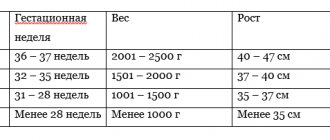Who is Glen Doman?
Glen Doman is a physical therapist from the USA. In 1940, after graduating from the University of Pennsylvania, he began to seriously study children's thinking, a stage of child development. After World War II, Doman resumed his research with assistants, founding the Institute for Human Development. In this institution, children were treated according to the doctor’s own method.
The specialist believed that children with developmental delays needed brain treatment. Poor memory, speech, imagination are only consequences of injury or illness.
In 1960, Glen Doman revolutionized the education and rehabilitation of children by publishing an article about his experience working with children suffering from brain damage. Since then, his technique has been popular in the States and abroad. His most famous books are “The Harmonious Development of a Child” and “How to Teach a Child to Read.”
Historical reference
Glen Doman is a physiotherapist who was born in America in 1913 and is the author of the eponymous method for early childhood development.
Glenn Doman became interested in how a child’s brain develops while still in medical school, and upon graduation, he began to closely study this topic. He began his research on “special” children who were diagnosed with cerebral palsy, mental retardation or central nervous system damage. In his work, the doctor used cards on which dots, words and various pictures were depicted. Subsequently, he increased the number of cards shown.
The images affected areas of the brain that remained active and healthy. As a result, it turned out that long-term brain stimulation with pictures has a positive effect on the condition of a sick child. After a few months of constant practice, his brain begins to develop. This technique even helped such children catch up with healthy children in their development.
Later, this technique began to be used for the early development of healthy children, and after the technique was refined by such a famous doctor as Manichenko, it became popular all over the world.
Basic principles of the Doman technique
The doctor created the technique based on his experience of interacting with children who are developmentally delayed. However, it turned out that his methods are universal: completely healthy students also perceive information well using Doman’s method.
The brain of a small person develops in accordance with the characteristics of age. The doctor believed that up to the age of 3, it is necessary to give the child the maximum amount of useful knowledge and skills, and then support them with regular classes.
The basic principles of Glen Doman's technique are simple and reliable:
- To succeed in early development, you need to make sure that your baby's brain is actively working in the period from 0 to 3 years (every day).
- The development of the body is no less important than the development of the intellect. Motor exercises and skills affect a child's mind.
- Until about 5 years old, the child independently motivates himself to explore the world; he does not need additional stimulation. After 5 years, parental help is required.
- The brain requires regular daily exercise in order to develop, learn new things, and process large amounts of information.
- Exercises are appropriate when the student is really interested in them. If the child does not show interest in classes, it is worth rescheduling them for several hours.
Doman believed that every child has a chance to prove himself and reveal his inner potential. But it is important not to miss the moment, to devote time to the child, to concentrate on his needs.
The method is humane: the teacher does not put pressure on the student, does not check the progress. The lesson ends before the child feels tired and bored. However, the implementation of the exercises is thought out in advance to the smallest detail: the adult is responsible for a constant flow of new knowledge, which must be absorbed by the baby every day.
What are Doman cards?
With the help of Doman cards, the child remembers animals, birds, learns to distinguish colors, professions, learns letters and numbers, gradually learning to read and count. The technique consists of separate cards with images and inscriptions of various objects. So in the baby’s head the pictures are associated with the words written on the card. At the beginning of training, these should be the simplest things that are familiar to the baby and evoke certain emotions in him. For example, mom, dad, soup, cat, bread, porridge and others.
You can purchase Doman cards in a specialized store, download them from the Internet, or make them yourself. If you decide to prepare the cards yourself, you must follow the recommended parameters and some nuances:
- The background of the cards must be white;
- The inscriptions are made on the bottom using a felt-tip pen or red marker;
- One card – one image;
- Font height = 7.5 cm; thickness = 1.5 cm;
- Size of one copy = 10x50 cm.
Showing cards with images of a specific topic will help develop logical thinking in the little one. For example, showing cards with pictures of dogs of different breeds will make it clear to the child that there are similarities and differences between them.
The human brain (even in the youngest children) is capable of analyzing, comparing, contrasting and drawing conclusions. Therefore, you should not be afraid to give your child new knowledge. One way or another, they will be deposited in certain areas of the brain. As mental development progresses, they will become activated and manifest.
With the help of inscriptions, the child will learn to distinguish letters and compare them with images. First, the baby remembers the set of letters that make up the demonstrated word. The next time it is shown, the baby will be able to recognize and read it. This type of training is intended for older children and is aimed at preparing them for reading.
Glen Doman developed cards that develop children's math skills. The neurosurgeon found that, unlike adults, when pronouncing a number, a child does not imagine the number, but the number of objects to which it points. For example, two apples, five pencils, three candies, etc. Therefore, math cards are made taking these features into account. The size of one card is 27x27 cm. They depict scattered red circles with a diameter of no more than 2 cm.
At the very beginning of training, it is recommended to use two sets of cards: with dots from 0 to 5 and from 5 to 10.
What can you learn from Glen Doman's method?
- Check . Cards with different numbers of dots are used.
- Reading . Doman suggests showing your baby cards with large printed words starting at 3 months, saying them out loud.
- Foreign languages . Words are remembered according to the same principle as in their native language.
- General knowledge about the world . Objects are divided into categories, showing them to the baby one by one so that he remembers them in accordance with the classification.
Text of the book “Early Development Methodology by Glen Doman. From 0 to 4 years"
Compiled by E. A. Straube Methods of early development by Glen Doman. From 0 to 4 years
Children quickly grasp countless objects. Cicero
So, let us not waste time in vain, especially since the beginning of all sciences requires one memory, with which children are gifted to the highest degree.
Quintilian (42–118 AD) On the Education of the Orator
You have a baby! Of course, like all parents, you dream that he will grow up smart and inquisitive, capable and comprehensively developed, so that he will not have problems in learning and acquiring knowledge, because his success in the future depends on this. And you intend to make every effort to provide him with everything he needs for this.
Today, parents can take their child's development seriously. The possibilities that books, manuals, games and toys open up for them are endless. Almost all mothers and fathers are familiar with the term “early development,” but not everyone has an accurate idea of its meaning. We hope that our book will help you figure this out.
What is early development
The term “early development” means the intensive development of the baby’s abilities, starting from his birth. Modern psychologists and teachers believe that 7 years is very late to begin a child’s education, because his brain is ready to perceive new information from the first seconds after birth. Therefore, parents are strongly recommended to start working with their child from the very first days of his life.
In accordance with fashion trends, a lot of developmental children's centers, clubs and entire schools have appeared that are ready to accept a child and teach him the basics of reading, mathematics, drawing and other useful things from the age of 6 months. This is where the parents were divided into 2 camps: some argue that newfangled trends are depriving the child of childhood, that he should play enough with toys, and only then start studying - after all, this is exactly how they and their parents were raised, and everyone grew up successful and successful. fully developed people.
Supporters of the second point of view enthusiastically accepted the new view and actively began to develop and educate infants, sometimes in the heat of the moment depriving them of that very “childhood.” Who is right? We invite you to find the “golden mean” yourself by understanding the essence of the proposed development methods and independently answering the questions of what they are intended for and how they work. In this case, you yourself will be able to develop your baby, without turning the process into boring lessons and duties, but, on the contrary, enjoying communication with each other.
• Each child is individual and develops at an individual pace. You can't compare him with other children.
• The goal of any early development method is not to “cram” as much knowledge and facts into a child as possible, but to teach him to obtain this knowledge - developing his mental and physical abilities.
• Training should bring mutual pleasure to both the baby and the mother, only in this case it will be successful.
Chapter 1 Early development according to the Doman method
Who is Glen Doman
It would not be an exaggeration to say that no early development method has caused as much controversy and contradictory judgments as Glen Doman’s system. Among the opinions about his development method, you can hear both enthusiastic reviews and severe criticism from teachers and parents.
Many people took on this work, received dubious results or did not receive them at all, saw the reluctance and resistance of children against this method of presenting information, and as a result, having become infected with the ideas of early development from Doman, they changed the method beyond recognition and received their own, such as the well-known to many Cecile Lupan.
So who is he, Glen Doman - the greatest Teacher who discovered a universal recipe for educating geniuses, or simply the author of a dubious methodology around which a stormy advertising campaign unfolded? Is it useful or harmful to work with a child using the Doman system?
It may seem strange to many that such a well-known technique for “raising geniuses” was originally rehabilitative. In the late forties of the 20th century, the American military neurosurgeon Glen Doman, working at the Philadelphia Institute, later called the Better Baby Institute (BBI), began treating children with brain injuries.
Using external stimuli, he tried to stimulate “reserve” brain cells that were not affected by the disease. In order for the children to begin to fixate their gaze, they were shown cards with red dots drawn on them, gradually increasing their number and intensity of activities. Then - words, pictures. The entire lesson took 5–10 seconds, but there were several dozen such lessons a day. The method worked.
The conclusions reached by Doman and his colleagues can be schematically described as follows: by stimulating one of the sense organs, you can achieve a sharp increase in brain activity as a whole.
As a neurophysiologist, Doman made a unique discovery: the brain develops only if it works. And the more intense the load on the baby’s brain in the first years of his life, the better his intelligence will develop. The more a baby is encouraged to move from birth, the faster the brain is formed, the more perfect and mature its cells will be, and the higher (in Doman’s terminology) its motor intelligence will be. This means that the baby will begin to crawl, sit, and walk independently much earlier than the generally accepted deadlines. And as soon as a child masters one or another motor skill, the next, higher, part of the brain begins to develop. Well, the faster the formation of the higher parts (and especially the cortex) of the brain occurs, the smarter and more savvy your baby will be.
The creative possibilities of children studying under the system of the Institute for Accelerated Child Development are so wide that Doman himself called them children of the Renaissance.
What does the Doman technique give to parents and children?
Subsequently, Doman tried to apply the system developed for patients in working with healthy children. With his works, he showed that human potential is enormous, that even at a very early age children can be taught a lot. At his institute, children two, three, four years old begin to read, master mathematics excellently, become real scholars, and at the same time are perfectly developed physically: they swim, run, and climb well.
No less important is another discovery of Doman: a child’s brain is programmed to learn from birth, and while its active growth continues (after three years it slows down significantly, and after six it practically stops), the child does not need any additional motivation for learning.
• Human potential is enormous; There is a lot that can be taught to children at a very young age.
• By stimulating one of the sense organs, you can achieve a sharp increase in brain activity as a whole.
• The brain develops only if it works.
• The more the baby is encouraged to move from birth, the faster the brain develops.
The main principle of the Doman method is the harmonious development of the child. This means that the development of intelligence occurs inextricably linked with physical development. Doman strives to “give children unlimited opportunities in life. And the achievement of this goal will be determined by what the child chooses for himself, who he decides to become, what he likes from a long list of possibilities.” But in order for him to choose, he needs to be provided with these opportunities. This is what the classes are designed to do: it is necessary to develop hearing, the ability to speak languages, plasticity and muscle strength - everything that can later become a favorite activity, a source of inspiration.
If you organize the process correctly, any child will enjoy learning everything you offer him.
This is the surest way to make your child happy and successful. He will learn to withstand heavy loads without serious losses, will be ready for the rhythm of modern life, and will realize that studying is a source of interesting discoveries and new opportunities.
Before you start classes
Working with a child using the Doman method is reminiscent of creating a complex computer program. Therefore, each piece of knowledge that the baby receives is called a “bit of information.”
• A child's brain is programmed to learn from birth.
• Studying is effective only during the period of brain growth. The human brain grows up to 7–7.5 years, but it grows most actively in the first three years.
• All babies have incredible abilities for languages.
• The faster the formation of the higher parts (and especially the cortex) of the brain occurs, the smarter and more savvy your baby will be.
Almost from birth, a child can be shown large cards with “bits of information.” Use word cards to teach reading. For teaching mathematics - cards on which the number is replaced by the corresponding number of dots. To obtain encyclopedic knowledge - cards with pictures. Such a card can depict an animal, an insect, or a work of art. The name of the item is written on the back, which is what the child must read. The more detailed (according to Doman - more informative) the explanation, the better. For example, the caption “large Galapagos tortoise” is preferable to “tortoise.”
Undoubtedly, Glen Doman's method is useful and, when properly organized, effective, although, like any method, this system has its drawbacks. However, you should not immediately abandon the method proposed by Doman. Remember the rule of the “golden mean”? This is precisely what must be observed, skillfully combining the elements of this system with other early development methods, with common sense, the characteristics of your child, as well as your lifestyle.
Glen Doman states: “If you show a child not just 10 random cards, but 10 cards belonging to a certain category, for ten seconds, you will thereby give him the opportunity to make 3,628,800 combinations from the knowledge he has acquired. Now he will not just remember ten bits of information for the rest of his life, but will master an entire system of knowledge.”
The Doman system is good because the child learns a large amount of information with ease, in a pleasant way for him, without violence, threats and similar “educational” delights. Parents can always find other ways to develop creativity and exploration.
Before you start, be sure to pay attention to a few important points.
• Classes using this method will require certain efforts and expenses from parents - after all, for a long time they will have to make thousands of cards with dots, words, images of animals, plants, and various objects.
• In the Doman system, the child is a passive object of learning. He sits, and his mother shows him one or another series of cards, telling him a strictly defined set of information about each. There is no dialogue and joint creativity with the child.
There is no need to abandon traditional “grandmother’s” methods. Let your child listen to as many fairy tales, songs, and poems as possible, and they do not always have to be accompanied by pictures, so that the child’s brain learns to independently complete the visual sequence to the text. This will help develop the baby’s speech and form text interpretation functions in time. Don’t forget about such ancient “developmental games” as traditional nursery rhymes, pestles, and finger games.
Scientists believe that we must not forget about the emotional and cognitive development of the child, since it is impossible to develop only one (in this case, visual) component. A “fact” must be touched, touched and licked, that is, examined with all the senses, and then, using its relationships with other “facts”, its place in the world must be determined.
• If you use only pictures with captions when teaching, as Doman recommends, the child does not develop textual thinking: the ability to independently read (or listen) and analyze the text, extract the necessary information from it.
• Doman compares the human brain to a computer, a very advanced one, endowed with a huge amount of memory, but still a computer that needs to be equipped with a good database to work successfully. But a child is not a computer, and he needs more than a certain amount of information.
So, if you decide to start training your child using the Glen Doman method, listen to the advice of specialists and experienced parents.
• There is no need to strictly follow all recommendations; Be sure to combine Doman’s methodological developments with other activities and educational games.
• Focus on the baby's reaction. Doman recommends showing the cards very quickly, holding each one for no more than 1-2 seconds. The brain of a small child works differently than that of an adult, and the baby seems to “photograph” the picture, and then processes the information received at rest. For children of the first – beginning of the second year of life, this is really true. But a one and a half to two year old baby will definitely let you know that this technique no longer suits him. Most likely, he will begin to take the album away from you, look at the pictures for a long time, and ask questions. Listen to your baby, and you will definitely understand exactly how to deal with him. Rely on your intuition, because any ready-made method is just a scheme from which you need to choose what seems useful and necessary specifically for your baby.
• Never do something that you don't like and that you think your child doesn't like.
• Do not take seriously Doman's assertion that a child's only need is to learn, and useless play is just a parent's way of “getting rid of” the baby. Psychologists have long proven that play for a child is a simulation of the world and an opportunity for self-expression.
• Work with your child for as long as you can. Don’t worry that you can’t fit into your daily routine showing several blocks of cards three times a day, most physical exercises, etc. It’s worth recalling that the technique was originally developed for children suffering from various diseases, and parents were ready to “live for the child.” Their purpose in life was to get them back on their feet. Is such sacrifice necessary for a healthy baby? Will parents be happy who have completely subordinated their lives to his education? And will this bring happiness to the child himself?
• When practicing according to the Doman method, use only what you can do. In any case, it will be better than nothing.
• Do not ask your child to give you answers, play with you, or read to you when he is not in the mood, just because it is time for the next “portion” of knowledge.
• The main thing is to try to talk with your child as much as possible on any topic. This is the key to your success.
• Provide your child with as many ways as possible to obtain information, not just cards. Let your baby have maps, books, a microscope, musical instruments and much more at his disposal that you can afford. The environment in which a child lives must be nurturing.
• The information you give to a small child should be based on the principle of “The child and his environment”, and its boundaries should be expanded depending on the age of the child. For example, you can show your child cards with household items, fruits and vegetables, plants of the area in which you live, domestic and wild animals that he can see or which are described in his books. Cards depicting what children are doing (walking, sitting, swimming, drinking from a bottle, smiling, sleeping) are very useful. You can make a series of cards that will depict representatives of various professions: painter, driver, fisherman, doctor, salesman, clown, etc. All this not only broadens the baby’s horizons, but also develops his speech. For ease of use, insert the cards into photo albums or folders with transparent pockets - files, and sign the pictures in large, clear letters. Then the baby will not only remember the pictures, but also gradually learn to read.
• Rejoice at every success of your child, even the slightest attempt to express himself, especially if this desire is noticed by you for the first time.
• Improve yourself, never stop there, look for answers to children's questions together with your baby, reason.
• Do not burden your child with useless information. To prevent obscure abstract facts from hanging in the air, it is good to combine such activities with reading your favorite books. For example, when reading Russian folk tales, prepare a series of cards with animals and plants that are mentioned in them, images of ancient household items (spinning wheels, spindles, rockers, bast shoes, etc.). If your child endlessly demands to reread “Aibolit”, it’s time to tell him what Africa is and show it on a geographical map, make and review the album “Beasts of Hot Countries”, in which there will be images of animals cured by Aibolit.
• Try to give your child not individual facts, but systematically organized information; present it from different sides, from different points of view, cover the same topic not only on cards, but also in games, posters, books, and other aids.
• Young children are much more capable of learning than anyone else.
• Young children are sure that the most wonderful gift for them is the attention that adults, especially mom and dad, give them completely.
• The best teachers are parents.
• They can teach their child absolutely everything that they themselves know, as long as this knowledge is true and based on facts.
• Do not give “knowledge tests”: testing reveals only what has not been learned.
• Learning is a game that ends before the child gets tired.
NOTES FROM EXPERIENCED PARENTS
Marina F
.: “My daughter and I started doing Doman training from the age of 3 months. We started with the development of physical abilities. Thanks to these exercises, the child was able to walk with support and crawl at 3 months; the child began to sit up at 4 months, and to walk on his own at 6.5 months. Moreover, opponents of such development only say that such activities are allegedly harmful to the child’s spine. I will say right away that all Doman’s exercises for this period of development are based on movement without stress on the spine. Thanks to these exercises, the muscles and ligaments of the spine are strengthened. But the question: “Why should a child crawl at 3 months or walk at 6 months?” – I don’t understand. Maybe it would be more logical to assume that it is harmful to swaddle a child and not allow him to move? And if a child can walk or crawl, he gets the opportunity to open new horizons for understanding the world around him. At least my child was delighted.
Then from 7 months we began to learn to read. It was an exciting game for a child. Again, I don’t understand those who ask: “Where is childhood?” Where are the necessary children's games? “Our training did not take more than half an hour a day, here is your answer - a whole day for other games. The result of the classes was that a child of 1 year 8 months read children's books on his own. Moreover, to avoid problems with long and unknown words, we, in addition to whole words, also learned all known syllables. From the age of 10 months they learned to count. Now my daughter is 2 years and 3 months old, we count to 100, do all the simple mathematical operations, and begin to study the multiplication table.
I will give the main argument why I am “for” Doman. Most children who are not prepared for school do not have time to master simple counting and mathematical operations by the end of the first grade, and then in the second grade - the multiplication table. The material is becoming more complex. Children are trying to understand the multiplication table without really knowing how to count. And the snowball begins: the child has not learned one thing, but he needs to learn something else. And so on until graduation. And initial knowledge polished to the ideal helps, and does not hinder, the assimilation of the school curriculum. In life, it will be easier for a child to understand other simple and complex things.”
Chapter 2 How to teach a child correctly
No need to be a professional
Most parents, having become familiar with Glen Doman's method in theory, are afraid to move on to the practical part and start classes with their child. There are several explanations for this.
Many are frightened by the statement that all instructions must be followed as precisely as possible - only in this case can the desired result be achieved.
Other parents, having become familiar with the Doman method, decide that it is too difficult to practice with their child: preparing for lessons takes too much effort and time, the lessons themselves require systematicity and a high pace, and this is quite difficult to achieve with a small child and many other responsibilities , which also need to be fulfilled.
At the age of 5, a child easily absorbs a huge amount of information. And the younger he is, the better he does it. If he is not even 2 years old, the learning process will proceed in the easiest and most effective way.
• A child under 5 years old is able to perceive information surprisingly quickly.
• All children are linguistic geniuses.
• Children under 5 years old are literally overflowing with vital energy.
In addition, many parents who do not have a pedagogical education are afraid of making a mistake, doing something wrong, thereby harming the child. They prefer to send the baby to development centers, where the children will be in the reliable hands of specialists.
Of course, such reasoning is not without common sense, but still there is no need to rush to abandon Doman’s technique. Please note the following facts.
From the first days of birth, a child needs the attention of his mother. Classes give your child not only knowledge, but also the much-needed communication between him and you. Besides, who better than a mother knows the needs and capabilities of her baby?
No matter how poorly (from your point of view) you teach your child to read, count and acquire other knowledge, it will still be more useful than if you do nothing at all. Classes using the Doman method are a win-win game in which you still win, no matter how poorly you play. The result will definitely be there, even if you put in a minimum of effort.
Children under 5 years old have a huge thirst for knowledge.
• The more information a child under 5 years old absorbs, the more he retains in his memory.
• Children under 5 years of age can learn anything you teach them if you do it sincerely, joyfully, and consistently based on facts. Moreover, they want to learn it.
• Children under 5 years old can learn as many foreign languages as they are allowed to learn.
The more competently and confidently you act, the faster and easier it is to teach your child - this truth is known. First, let's look at the main thing that needs to be remembered about the child himself, and only then we will discuss the question of how exactly he should be taught.
To educate a child you need:
• parents' attitude and approach;
• volume and order of presentation of educational material.
Doman places great importance on three main areas of intellectual development - reading, mathematics and encyclopedic knowledge. The most important of these is reading. The ability to read is one of the highest functions of the human brain. Of all living beings, only human beings can read.
Moreover, reading is one of the most important skills needed in life, since all other education is based on it. Therefore, you should start with learning to read. Once you begin an appropriate training program, you will gradually begin to supplement it with a training program in encyclopedic knowledge.
Human intelligence is based on one's own knowledge. Without knowledge there can be no intelligence. Therefore, in parallel with the reading training program, you begin a program for teaching encyclopedic knowledge, using several sets of pre-prepared cards. Once your child has a good grasp of the facts, begin the math curriculum.
If you or your child are not interested, stop classes. Apparently you are doing something wrong.
At the same time, from the first days of birth, attention should be paid to the physical development of the child. As a result, the baby will grow up to be a harmoniously developed personality, and his abilities will allow him to achieve a lot in life.
Each time, reinforce the child’s learning process with a kiss or a gentle touch or a smile.
How to apply the technique at home
The principles of the Doman technique are clear and do not require special preparation. Here is a list of the main rules.
- Work with your child without the slightest coercion. The kid doesn’t want to study and throws the cards aside - which means the exercises need to be rescheduled for a more appropriate time.
- Try to offer cards when children are in a good mood: they have slept, eaten, rested, and have not experienced stress before.
- If you start practicing according to the Doman method, get ready that the exercises need to be done daily, 2 times a day (preferably 3).
- Show cards for 10-15 seconds, no more. The process is aimed at quick memorization, without immersion.
- During the lesson, slowly say what is written on the card. Do not swallow sounds, take care of clear pronunciation.
- The exercise scheme is as follows: on the first day, work with your child on the first completed set. The next day, repeat and add a second set (that works out to 6 sets per day). On the fifth day you will have to conduct 15 small classes. The volume of information will already be quite large, so from each pack you will need to exclude one card that has already been worked out.
The right approach to work
Classes according to the Doman system are important for every child. However, experts advise following two simple principles to ensure the best learning results.
- It is not recommended to try to show your child many cards at once. Kids simply cannot absorb huge amounts of information. Therefore, you should use only those cards that are relevant at the moment. For example, there is no need to show cards with complex shades of colors to a six-month-old child; it is enough to grab a dozen colors first.
- You cannot study only using Doman cards. The child should play with his favorite toys and practice using other methods. After all, a child’s development must be versatile, and focusing on one aspect will leave gaps. Communication with peers, walks, exploring the world around us with our own senses - this has not been canceled.
Make a busy board, a sensory mat, read fairy tales - the more varied the activities, the better. But don’t jerk the child too much, everything should be in moderation.
How to teach a child to read using the Doman method?
Glen Doman proposed an extraordinary, rather controversial way of teaching. In his opinion, at 10-12 months it is time to prepare the child to read words. To successfully master letters and syllables, it is enough for a child to grasp the general laws of reading and fix in memory the visual appearance of the lexeme as a whole.
The lesson proceeds as follows: the parent sequentially shows the child cards with pre-printed words. The letters should be red as mentioned above as this color automatically attracts attention.
While reading, remember the basic rules:
- It is recommended to compile sets of words on main topics. When creating sets, rely on the child’s age and his needs: very young children should make a list of words listing family members, simple objects, living creatures that surround the children (mom, dad, dog, ball).
- Record the pace at which your baby’s vocabulary is enriched. When he masters basic vocabulary, move on to a more complex level of the Doman technique - cards with phrases or sentences.
- Always start by memorizing nouns. At school they begin to study grammar with them, because objects and persons are the basis of a sentence. Then you can move on to verbs, adjectives, and other types of words.
- Breaks between classes should be at least 30 minutes so that the child has the opportunity to be distracted and switch attention. During rest, the brain processes what it sees and stores it in memory.
How to organize a lesson correctly?
The child’s mood before class is positive, he is ready to learn. The parent attracts his attention and shows the cards. Words should be pronounced in an even tone, clearly and clearly. The educational material is pre-divided by topic.
For very young children, simply show the card and say what is shown on it. Additional information is not required - it will only load the child’s brain. With age, they add characteristics of the object, ask them to classify the picture and find it among others. By the fifth day of classes, children are shown about 25 cards.
Classes according to the Doman system are suitable for both children with normal development and for children with pathologies of the development of the brain or nervous system. The main thing is to determine the optimal “dosage” of cards, the time of demonstration, and also to be able to interest the child and understand when it is better to end the lesson.
How to teach a child to count using the Doman method?
Children do not master abstract concepts; arithmetic operations must be demonstrated literally, visually. When explaining numbers, you should show cards with a specific number of dots.
When studying counting, 100 large cards (28 by 28 cm or larger) with different numbers of red dots are used. The technique of performing the exercises is similar to the technique used during reading.
- The child is shown the card for 15 seconds.
- It is recommended to work with 5 cards 3 times a day, increasing their number.
- You need to add 2 new cards and remove 2 old ones when the child gets used to the material he has mastered.
It is expected that in the future the child will be able to orally solve complex examples, immediately imagining the number of points, not numbers.
Knowledge program new life of old cards
With constant use of this technique, a huge number of already studied cards for development are collected very quickly. If you modify them a little and add a description, you can get materials for the so-called “knowledge program”.
The knowledge program is one of the parts of the Doman methodology. It consists in the fact that you not only show your child a card on which this or that fruit or vegetable is depicted, but you talk about various facts related to the trees depicted on them, personal hygiene items, food, etc.
You can do this in 3 ways:
- Just voice it;
- Read them out, showing the card on which they are printed in large letters;
- Talk about them by showing a picture of what they refer to.
Facts for knowledge cards
It’s up to you to decide which fact to indicate on the card that shows something from the “transport” or “furniture” category. The main thing is that they are arranged in order from the simplest to the most complex. For example, for a hedgehog you can specify the following facts:
- The hedgehog is a wild animal, but can live in the house;
- Hedgehogs are not capable of carrying mushrooms or apples on their spines;
- In winter, hedgehogs hibernate, which lasts a little more than 4 months;
- The hedgehog has more than 10,000 spines;
- The first hedgehogs appeared 15 million years ago;
- Hedgehogs have a small tail, 3 centimeters long;
- Hedgehogs have a keen sense of smell and hearing, but they see poorly.
The number of facts and their order depend only on your preferences and the information available to you. In this case, it is desirable that they be arranged in order of difficulty: the first fact is the simplest, and the last is the most difficult. Finding them is not so difficult, just go to Wikipedia or read a selection of interesting facts.
You can write what you will learn on the back of a card, or print it in large print on another card and stick it on the back. This method is usually used by those who decide not only to read out the facts, but also to show them in the form of text.
When creating your own set of facts, you must follow these recommendations:
- Credibility. You should not take facts that you are not sure of;
- Accuracy. For example, “A laptop is a portable computer” is a good fact, but “A laptop is more convenient than a computer” is already a value judgment;
- Clarity and unambiguity.
It is desirable that these facts affect other categories as well. At the same time, it is important that the information is not only simple and understandable to the child, but also interesting, and, if possible, also fun. This way you can increase your baby's interest.
Scheme of classes according to the knowledge program
You can start classes immediately after you have prepared all the necessary materials and collected a sufficient number of interesting facts.
Showing cards from the knowledge program should be done at least 3 times a day. In this case, for starters, 5 categories will be enough for you, each of which will have 5 pictures.
The lesson is conducted as follows. You show the picture and read out the facts you collected. In this case, speed is absolutely unimportant. The main thing is the volume and clarity of your speech.
When showing the image, read only one, simplest fact. After a few days, when your little child has thoroughly studied all the material provided, you can replace the fact cards with others. There is no need to change categories. This is due to the fact that it takes more time to study the facts, and because of their gradual nature, you can get confused with what you have already learned and what you have not yet learned.
On average, it takes 3-5 days to study the simplest facts (depending on the frequency of displaying images). But if necessary, you can speed up this process and enter new pictures a little earlier.
When you have completed all the difficulty levels of the information you have collected from the pictures in the categories you have chosen, you can replace them with 5 new ones.
Development of intelligence using Doman cards
Glen Doman writes that it is still useless to explain the phenomena of the surrounding world to a small child, because he knows nothing about human nature or physics. First, you need to put into your head a theoretical base, encyclopedic knowledge, which in the future will allow children to draw their own conclusions about events.
Doman believed that understanding life is the main goal of developing intelligence. In order for a child to grow up erudite, you need to rely on memorizing important theoretical facts.
For adequate and quick perception of information, cards that meet the requirements are required.
- no more than 1 item is depicted on the card;
- the child has not seen what is depicted before;
- parents clearly say the name of the subject; large card;
- You can easily determine from the picture what is shown.
You can show your child 10 cards 3 times a day, increasing their number to 120. When the child sees a card several dozen times, you can consider it to be completed and put it away for a while.
Among Doman's cards for the development of intelligence, you can find 10 categories:
- mathematics (different number of colored circles);
- language (words in different languages);
- literature (for example, a category with domestic classics);
- biology (animals, fish, birds);
- human anatomy (skull, skeleton, etc.);
- geography (cities and countries);
- history (statesmen);
- music (composers);
- art (artists, paintings);
- general knowledge (household items, etc.)
Intellectual activities from birth
As you know, a child begins to perceive the world around him with the help of his organs of vision and hearing. It was on the basis of this fact that Glenn Doman’s method for early development was developed.
You can develop your child’s intellectual abilities not only with the help of encyclopedic cards designed to introduce the child to the world around him, but also with the help of educational cards for reading and counting. For example, flashcards for learning to read might be a picture with a word printed on it. The word itself should be written in a fairly large font. In this case, it is desirable that it be black text on a white background.
Using Doman cards in English, you can also start teaching your child a foreign language. At the same time, if you teach a child to read using the same method, then the words printed under the picture should be of a different color. So, if to learn to read in Russian you use black for words, then for English there should be red words and a white background.
Thus, with the right approach to using cards, you can teach your child anything, for example, introduce him to masterpieces of fine art, flags of different countries, cities, dog breeds, etc.
Physical development according to the Doman method
Glen Doman rightly noted that the physical development of a child inevitably affects the mental one. For example, fine motor skills and coordination affect the ability to print and recognize letters and count.
If you want your baby to grow up smart and eager to learn, you will need to devote time to physical training. They stimulate the brain to work more productively.
Each age period requires a separate approach to early physical development. Let's consider the characteristics of each age.
From 0 to 2 months
It is worth paying attention to the development of general motor skills. The doctor helped retarded children develop the crawling reflex, believing that crawling helps the brain form new nerve cells that affect intellectual growth.
The child is placed on a crawling track - a simulator designed for daily exercise. It creates a simulation of a tunnel, and the child is forced to push off with his limbs to crawl forward while lying on his stomach. This is how children learn to crawl faster than their peers, which has a beneficial effect on physical education and, accordingly, intelligence.
The parent gives the baby a finger and helps lift the abs. The child is hanging on his finger. This exercise develops strength and balance.
Doman worked with children who suffered from birth injuries and were diagnosed with cerebral palsy and hearing problems. However, the American physiotherapist’s technique is also applicable to children without health problems.
From 2 to 7 months
As the child gets older, new exercises can be introduced. They are short and don't take much time.
- Place the baby belly down on your shoulder and move around your axis (slowly, without sudden movements).
- Turn your baby's stomach toward your neck and repeat the exercise (alternately on the right and left sides).
- Turn the child to face you, pick him up and throw him in the air. Not very high, definitely above a crib or something soft.
- Take the child by the wrists and begin to rotate around your axis. At the moment of rotation, the baby must see the adult’s face in order to feel support.
From 7 months to 1 year
- Rocking the child, repeating rotations to develop balance.
- Crawling on all fours - the more the better. Ideally, the child should move in this way for at least 4 hours a day.
- Stretching on the crossbar with support from parents. Each time you should make your grip a little weaker, giving the child the opportunity to hang without help. 15-20 seconds - one approach, about 15 times a day in total.
From 1 year
- Walk a few steps. At least 20 approaches per day.
- Balance exercises. Tossing a child on different surfaces with a safety net.
Rules for conducting exercises
- parents need to always be nearby, looking after the child;
- the floor and objects touched by the baby must be clean;
- It is more convenient for children to exercise in a bodysuit that does not restrict movement;
- Place your child’s favorite bright toys around to stir up interest;
- Verbally encourage children's efforts.
Pros and cons of the technique
The method of teaching a child using Doman cards, like any other early development method, has both advantages and disadvantages. Therefore, before creating educational materials and starting classes using the Doman method, you should learn about all its pros and cons.
pros
The advantages of this method include the following:
- To work with a child using Doman’s cards “Utensils” or “Garden”, you do not need to have special knowledge or spend a lot of time. In this regard, you can train it yourself.
- To develop a child, you do not need to go to special development centers. Training can take place both at home and on vacation.
- You can make educational materials yourself, and thereby save money from the family budget.
- Physical exercises according to Doman develop not only physical, but also mental abilities.
- Using cards you can stimulate brain activity in a child under 6 years old. The sooner you start classes, the more knowledge he can gain.
- Using this technique, the speed of thinking, photographic memory of the brain and imaginative thinking are developed.
- It takes relatively little time to master a huge amount of information.
- Encyclopedic cards and a further knowledge program ensure the comprehensive development of the baby.
Minuses
This early development method also has its opponents. They name the following aspects as its disadvantages:
- With this type of learning, the child takes a passive role. Basically, while you're showing and telling, he's not doing anything. It just looks and happens.
- Tactile, tactile and olfactory channels of cognition of the world around a small child are no less important than auditory and visual ones. However, they are not involved in any way in this technique.
- All Doman training comes down to memorization. No creative component or other type of brain activity is observed.
- If you teach a child to read, count and study with encyclopedic cards at the same time, then you can overload him.
Strengths of the technique
- Parents often give a positive assessment because they quickly notice the child’s interest and involvement in the process. Bright cards with large figures, words, and images really quickly capture the baby’s attention.
- Also, Glen Doman's technique bears fruit because of the obligatory point - regularity. Exercises repeated day after day always help to raise the level of development of intelligence and physical culture.
- The availability of educational materials is captivating. You can buy Doman cards or make them yourself at home, adding your own exercises or details of other techniques. Presentations, books, and discussions of Glen Doman’s methodology are available on the Internet, which allows you to receive feedback and collect the necessary information.
- Early development of the baby has become a modern trend, so parents are interested in a method that would offer activities from infancy. The Doman system aims to satisfy this need. There is a chance to make a child smarter, more erudite, and more resilient than his peers, directing efforts towards the diversified development of his personality.
- The technique promises to improve instant memory, memorizing the graphic appearance of words and numbers.
- There is no pressure on the child’s psyche: no checks, coercion, strict control. The baby is free to act.
Basic principles of training according to Doman
It is believed that children's mental activity is most pronounced at the age of 6 years, therefore, if you use Glen Doman's method from birth, there is every chance of raising a genius.
A child's brain is like a sponge, absorbing knowledge from birth. Therefore, for a child to develop maximally, the learning needs of his brain must be constantly satisfied by allowing him to do certain exercises. For this, Doman cards or the general development program “Umnitsa” by Doman-Manichenko are best suited.
Disadvantages and contradictions of the technique
- It is difficult to consistently comply with the standards for creating educational cards (size of the card itself, letters, etc.)
- Making the material requires effort and free time - for example, a separate card for each word from the story.
- It is required to pay a lot of attention to the baby every day, which can be difficult for modern parents to organize.
- Most schools cover sounds and letters first before moving on to reading. Children raised using the Doman method may have difficulty recognizing individual letters because they have learned to recognize the image of the word as a whole.
- The American doctor’s method does not help develop a creative approach to life, imagination, analytical thinking, or fantasy. The child is well erudite, but does not understand how to apply knowledge, and feels confused when communicating with more savvy peers.
- While reading new books, difficulties may arise in understanding previously unstudied lexemes. Reading in general becomes a labor-intensive process: the child automatically looks for words that are already familiar to him, and in their absence falls into a stupor.
- There is quite a bit of free time left for leisure, ordinary children's games with friends. The child runs the risk of adapting poorly to society, the team: kindergarten group, class.
The essence of the technique
To achieve the expected results, it is recommended to follow some rules. First of all, classes should be conducted in a playful way. The child cannot be forced, scolded, or sharply criticized. This is especially true for the first lesson. The child may lose interest in lessons, as well as trust in parents as teachers.
Training must take place in a predisposing environment. To do this, you need to choose a moment when the child is calm and ready to perceive new knowledge. If the baby is capricious, wants to sleep, is hungry or is sick, such lessons will not be useful. Classes should be enjoyable and exciting.
It is very important to praise and encourage the baby in every possible way. You need to sincerely rejoice at his successes, smile and express your emotions. If you are in a bad mood, tired or not interested, it is best to reschedule your classes to a more convenient time.
The scientist recommends carefully preparing for each lesson. During the lesson, it is important to eliminate distractions - turn off the TV, music, put away the phone, etc.
During the lessons, it will become clear which topics interest your child the most. However, you shouldn’t limit yourself to them only. With each lesson, new materials should be introduced to study. Don't be afraid to give your baby a lot of information. The child's brain is capable of remembering and analyzing large volumes. At the same time, there is no need to require him to report on the knowledge acquired. When a child is interested, he will certainly want to share with you what he has learned and discovered.
If a small student begins to get distracted, crawl or run, or play with toys, training must be stopped. This indicates overwork or indifference to the lesson.
Advantages of the technique
Doman's development method also contributes to the physical development of children. Doman identified 7 stages in a child's progression from infancy to 7 years. These stages go along with the stages of brain development. In the first period, the upper parts of the spinal cord control hearing, vision, manual skills and movement. In the finishing period they
control the upper parts of the cerebral cortex. Any subsequent stage, as it improves, removes the old stage and controls different roles of the brain. The jump from one level to the next is illustrated, according to the program, by a certain number of gestures and actions. A child who is not enrolled in the program goes through these stages in 6.5 years. And children studying according to Glen Doman's course complete these levels in 3.5 years.
How to make Doman Cards yourself?
We invite you to download Doman cards and print them for your child. It is better to do this on matte (to avoid glare) paper with a density of 250-300 g/m2 or glue it to cardboard. It is advisable to laminate the finished cards, then they will last longer and can be used in other educational games.
This didactic material can also be successfully used in Makato Shichida’s methodology, aimed at developing photographic memory, creativity, and intuition. To do this, you only need to cut off the names of the items along the dotted line.
Go to the children's education section











